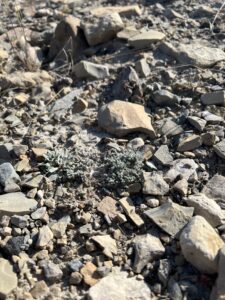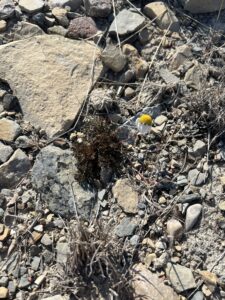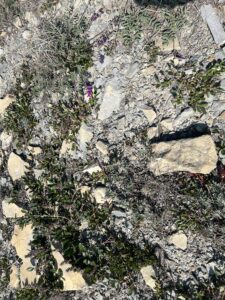My project was on the affects of slope aspect (North or South facing) and the affect on vegetation health. I used slopes on landfills in the arctic and visually classified the vegetation cover and counted the number of species. I completed the field study when I was in the Arctic for work in July and had an abundance of enthusiasm. One of my challenges was motivation to finish the report as here we are in January and I am just finishing it now! My results were contrary to my hypothesis and the North facing slopes actually did better than the South Facing slopes. The papers from my annotated bibliography suggest this could be because the South facing slopes were more exposed to the elements or perhaps less sunlight was actually beneficial to the vegetation as more water availability meant the plants could uptake more nutrients.
One lesson learned would be to complete more of the annotated bibliography earlier in the process so I could’ve made adjustments to the sampling design (perhaps I could’ve measured water content of the soil in each quadrat).
Though I’ve worked in the Arctic for 15 years I have realized there are so many tiny plants to be appreciated. My project has led me to take a closer look at plants on my journeys and take the time to identify new species I come across. I purchased The Arctic Guide to help with my plant ID.
Here are a few photos of the tiny plants I encountered in my research.

Left: Polar whitlowgrass, draba micropetula. Found on high arctic meadows, alpine ridges, seepage slopes.
Right: hemispherical whitlowgrass, draba subcapitata, Grows around snowbeds, moist substrates on ridges and gravel outcrops

seashore camomile (genus tripleurospermum) tripleurospermum maritimum, roadsides and inland grasses sites near human habitation.

Arctic willow, salix arctica, moist tundra, grows extremely slowly.

Alpine milk vetch, astragalus alpinus, stony margins of shallow ponds, grassy slopes and scree slopes,